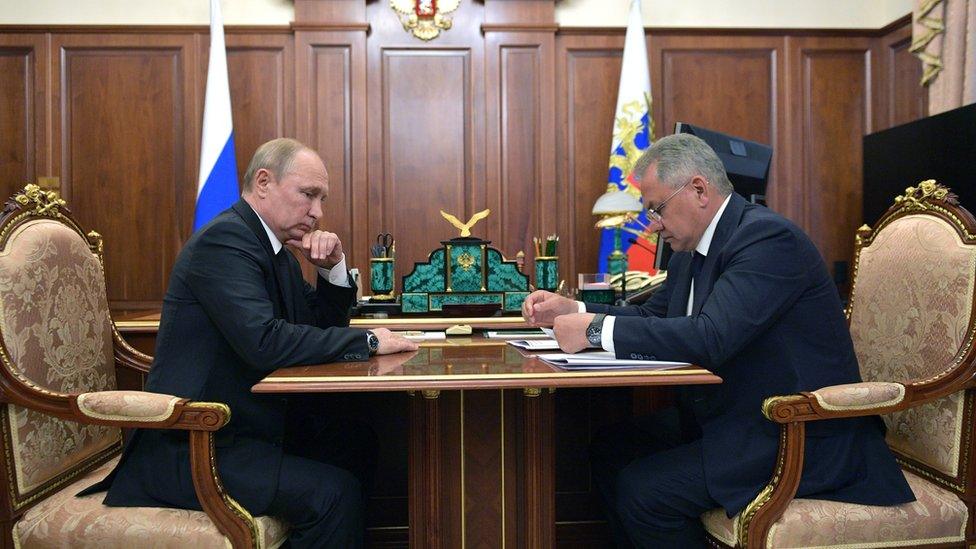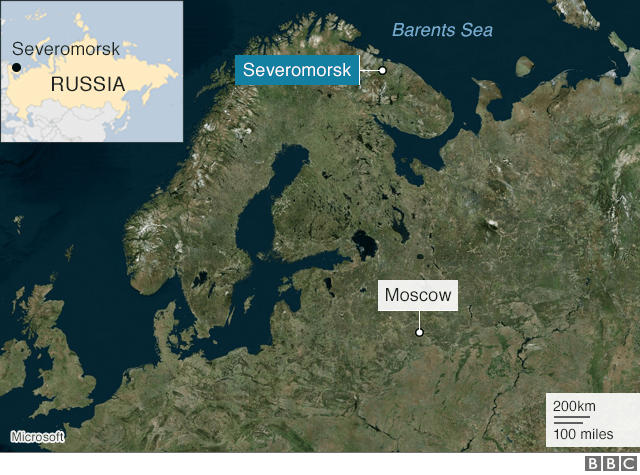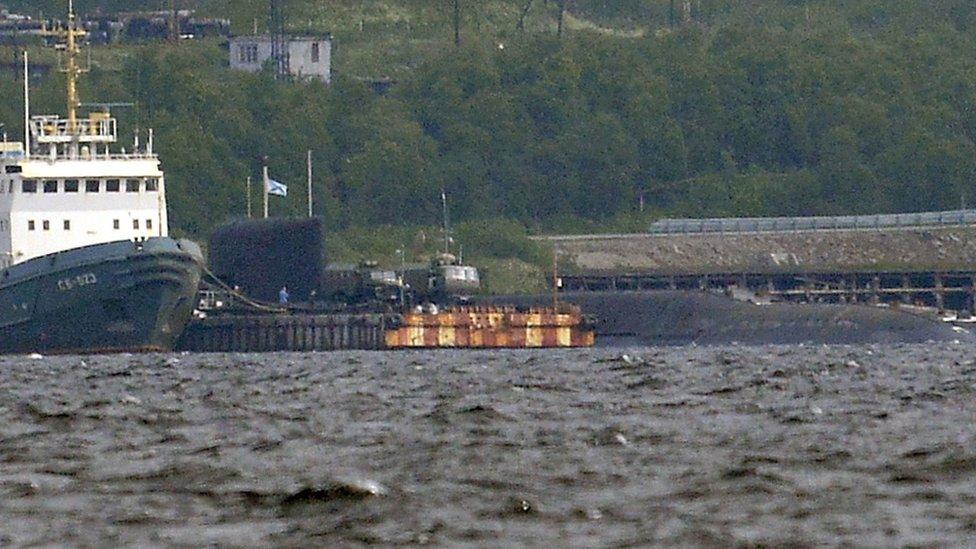Russia says details of fatal submersible fire are 'state secret'
- Published
The BBC's Steve Rosenberg reports on Russian media coverage of the underwater disaster
Russia refused to release any details about a fire which killed 14 crew aboard a submersible on Monday, saying the information was a "state secret".
Revealing the incident on Tuesday, Russia's defence ministry said the men died from smoke inhalation.
Authorities refused to say whether the vessel was nuclear powered, raising concerns over possible radiation leaks.
Dmitry Peskov, President Vladimir Putin's spokesman, said details about the vessel were "totally classified".
"There is nothing illegal about this. It fully corresponds to the Russian law on state secrets," he said.
Defence authorities said the vessel was a navy research submersible that was taking measurements in Russian waters.
But Russian independent media outlets reported that it was a small nuclear-powered submarine, naming it as the AS-12 Losharik. US officials said the vessel was designed to cut undersea cables.
The craft is now at Severomorsk, the main base of Russia's Northern Fleet on the Barents Sea. The port was also home to the Russian Kursk nuclear submarine, which sank in 2000 killing 118 sailors.
What did the Kremlin say?
In a conference call with journalists, Mr Peskov said it was "absolutely normal" to keep details about a vessel confidential, adding that it was in "the interests of the state and state security".
He refused to answer questions about the vessel's name, mission, or whether the craft had a nuclear reactor, telling reporters to ask the defence ministry.

President Vladimir Putin met with Defence Minister Sergei Shoigu to discuss the deaths
President Putin was informed "immediately" about the deaths, Mr Peskov said, adding that the crew had "acted heroically to save the vessel". Russian authorities did not release details of the incident for a day after it happened.
Mr Putin expressed his "sincere condolences" to the victims' families and said seven captains and two service personnel who were among the dead had been awarded Russia's highest honorary title - Hero of the Russian Federation.
Asked if the president would meet relatives of the dead crew, Mr Peskov said Defence Minister Sergei Shoigu had been sent to Severomorsk. He said the president had returned to Moscow and ordered an investigation into the deaths.
Unconfirmed Russian news reports said that at least five crew members survived the incident and were taken to hospital.
In 2000, Mr Putin was heavily criticised for the way he handled the Kursk submarine disaster. Media reports at the time showed the president enjoying a holiday at a Black Sea villa as families of the victims demanded information about their relatives.


Underwater tragedies
Accidents involving underwater vessels are rare. Here are some of the most serious:
The Argentine navy's ARA San Juan submarine with 44 crew disappeared during a routine patrol in the South Atlantic in 2017. The wreckage was found a year later
All 70 crew aboard China's Great Wall Ming-class submarine suffocated in 2003 when a diesel engine malfunctioned, consuming the vessel's oxygen supply
Russia's Kursk submarine sank in the Barents Sea in 2000 after a torpedo exploded during an exercise, killing all 118 on board, including 23 who survived the blast but died due to a lack of oxygen
The USS Scorpion sank in the Atlantic in 1968, possibly because a torpedo exploded, killing the 99 crew
The USS Thresher sank during diving tests in 1963, killing all 129 on board - the biggest submarine death toll in history

- Published3 July 2019
